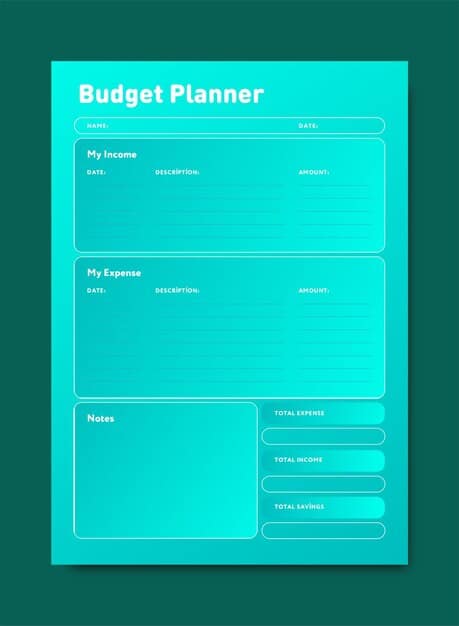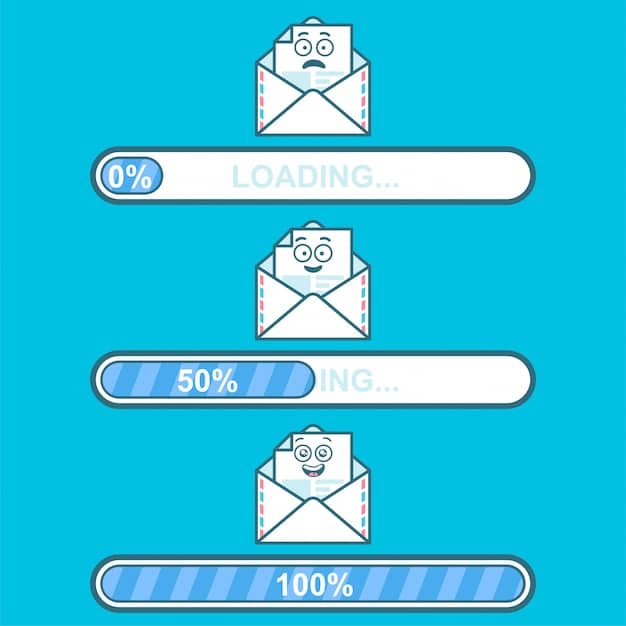Freelance Invoicing Secrets: Get Paid Faster in the US

Freelance invoicing secrets encompass strategies and best practices to expedite payments and mitigate late payment risks for US-based freelancers, including clear invoice terms, automated reminders, and effective communication techniques.
As a freelancer in the US, getting paid on time can feel like a constant battle. Unclear invoices, forgotten reminders, and awkward follow-ups often lead to delayed payments and unnecessary stress. But it doesn’t have to be this way. Discover freelance invoicing secrets that can help you get paid faster and avoid late payments, ensuring a smoother and more profitable freelance career.
Mastering Freelance Invoicing: Laying the Groundwork for Success
Effective invoicing begins long before you send your first invoice. It’s about setting clear expectations, establishing professional relationships, and having the right systems in place. By mastering the fundamentals of freelance invoicing, you can significantly reduce the chances of late payments and create a more predictable income stream.
Define Clear Payment Terms Upfront
One of the most common reasons for late payments is a lack of clarity around payment terms. Before starting any project, discuss and agree on key details with your client.
- Payment schedule: Will you be paid hourly, per project, or on a retainer basis? Define the frequency of invoices (e.g., weekly, bi-weekly, monthly).
- Payment methods: What payment methods do you accept (e.g., PayPal, direct deposit, checks)? Make sure your client can easily use your preferred method.
- Due dates: Specify the number of days clients have to pay an invoice (e.g., Net 15, Net 30). Be clear about when late fees will apply.
Craft a Professional Invoice Template
A well-designed invoice template makes it easier for clients to understand what they’re paying for and how to pay. Important elements include:
- Your contact information: Name, address, phone number, and email address.
- Client contact information: Company name, contact person, address, and email address.
- Invoice number and date: Use a consistent numbering system for easy tracking.
- Clear description of services: Itemize each task or deliverable with a brief description.
By laying a solid foundation for your invoicing process, you will set yourself up for success. Having well-defined payment terms and a professional invoice template will save you time and improve your ability to manage your cash flow efficiently.
Creating Compelling Invoices: Tips for Clarity and Impact
An invoice isn’t just a bill; it’s a reflection of your professionalism and attention to detail. A clear and compelling invoice not only helps clients understand what they’re paying for but also encourages prompt payment. By focusing on clarity, accuracy, and user-friendliness, you can create invoices that get you paid faster.

Itemize Services and Deliverables
Avoid vague descriptions like “Consulting Services.” Instead, break down each project into specific tasks or deliverables with clear descriptions.
Be Specific About Rates
Whether you’re billing hourly or per project, clearly state your rates on the invoice. This removes any ambiguity and prevents disputes.
Add a Personal Touch
Consider adding a short, personalized note to your invoice, thanking the client for their business or mentioning something specific about the project. This can foster goodwill and encourage faster payment.
Creating compelling invoices is key to getting paid faster. By putting in the work to ensure your invoice is clear, detailed, and professional you will make it easier for your clients to pay you on time. This can lead to a better working relationship and more predictable cash flow.
The Art of Invoice Delivery: Timing and Automation
Knowing when and how to send your invoices can significantly impact how quickly you get paid. The art of invoice delivery involves striking the right balance between timeliness and professionalism. By leveraging automation and mastering the perfect timing, you can streamline your invoicing process and improve your chances of getting paid promptly.
Send Invoices Promptly
Don’t wait until the end of the month to send all your invoices. Send them as soon as you’ve completed a project or reached a pre-agreed milestone. This keeps your work fresh in the client’s mind and reduces the likelihood of delays.
The sooner your client receives the invoice, the sooner they tend to process it. Immediate invoicing projects a sense of urgency and helps you manage your cash flow predictions more accurately.
Automate Your Invoicing Process
Use invoicing software or tools to automate tasks like generating invoices, sending reminders, and tracking payments. This saves time, reduces errors, and ensures consistency.
Automation helps eliminate the mundane and repetitive tasks of bookkeeping, invoice creation, and sending follow-up emails. It ensures no invoices get lost, and payment reminders are sent punctually.
Schedule Reminders Strategically
Set up automated payment reminders that gently nudge clients when an invoice is nearing its due date. A friendly reminder can be all it takes to prompt payment.
Sending payment reminders strategically increases the probability of receiving payment sooner. These reminders are effective in ensuring your invoices remain on the client’s radar so delays can be avoided.
By mastering the art of invoice delivery, you can improve your cash flow and free up time to concentrate on your core freelance activities. Utilizing automation and staying punctual are strategic tools that can set you apart and lead to better financial health.
Following Up on Overdue Invoices: Strategies for Success
Despite your best efforts, sometimes invoices go unpaid. Knowing how to follow up effectively is essential for getting paid without damaging client relationships. The key is to be persistent, professional, and proactive, so you can tackle this delicate task with confidence.
Craft a Polite First Reminder
If an invoice is a few days overdue, send a polite email reminder. Keep the tone friendly and assume it’s an oversight.
Escalate Gradually
If the first reminder doesn’t work, send a second email a week later. This time, be slightly more assertive while maintaining a professional tone.

- Phone call: Sometimes a phone call can be more effective than email. It allows for a more personal connection and the opportunity to address any concerns directly.
- Consider Late Fees: It may be time to start considering adding late fees to your next invoice since the payment is overdue and you have provided enough friendly reminders.
Know When to Seek Help
If repeated attempts to collect payment fail, consider seeking assistance from a collection agency or attorney. This should be a last resort, as it can damage your relationship with the client.
Effectively following up on overdue invoices is necessary for a freelancer. It helps ensure you get paid for your services while maintaining professional client relationships.
Tools and Technologies to Streamline Invoicing
The right tools and technologies can dramatically simplify your invoicing process, saving you time and improving accuracy. From invoicing software to payment gateways, there are many options to choose from. By selecting the right tools for your needs, you can create a more efficient and professional invoicing system.
Invoicing Software
Consider these programs to help with simple and automated invoice creation.
- FreshBooks: A popular choice for freelancers, offering features like time tracking, expense management, and automated payment reminders.
- Zoho Invoice: A free option for small businesses, with features like recurring invoices, payment tracking, and customizable templates.
- QuickBooks Self-Employed: Integrates with QuickBooks accounting software, offering features like income and expense tracking, tax estimations, and invoice generation.
Payment Gateways
Give clients a variety of convenient payment options.
- PayPal: A widely used online payment platform that allows clients to pay with credit cards, debit cards, or their PayPal accounts.
- Stripe: A payment processing platform that allows you to accept credit card payments directly on your website.
Time Tracking Tools
Accurately track your time so you can bill clients accurately.
- Toggl Track: A simple and intuitive time tracking tool that allows you to track time on projects, tasks, and clients.
- Clockify: A free time tracking tool with features like project management, team collaboration, and reporting.
The advantages of using the right tools and technologies in your invoicing process are great for any US based freelancer. Utilizing tools that work for you can streamline the billing process and maintain accurate and efficient invoices. Automation, accessibility, and simple designs all lead to improved invoicing and payment success.
Preventing Late Payments: Proactive Measures for Freelancers
Prevention is always better than cure. By taking proactive measures, you can minimize the risk of late payments and create a more stable income stream. These measures require you to have great communication and set the correct expectations up front.
Screen Clients Carefully
Before taking on any work, research potential clients to assess their payment history and reputation. Check online reviews and ask for references.
Require Upfront Deposits
Asking for a percentage of the total project cost upfront can create confidence you will get paid for the services offered. It also ensures that clients are committed from the outset of the project.
Maintain Open Communication
Regularly communicate with clients throughout the project to keep them informed of your progress and address any concerns promptly.
Being proactive early in the freelancing process can lead to great success and consistent pay schedules. By doing these things you minimize the risk of late payments and save your time, energy and resources.
| Key Point | Brief Description |
|---|---|
| 📝 Clear Payment Terms | Define payment frequency, methods, and due dates upfront with clients. |
| 🚀 Automate Invoicing | Use tools to automate invoice generation, reminders, and payment tracking. |
| 🤝 Proactive Communication | Maintain open communication, screen clients, and request deposits. |
| 📧 Follow-Up Politely | Send polite reminders for overdue invoices, escalating gradually if needed. |
Frequently Asked Questions (FAQ)
▼
Your invoice should include your contact information, the client’s contact information, a unique invoice number, the date of issuance, a detailed description of services provided, the agreed-upon rates, any applicable taxes, the total amount due, and payment terms.
▼
The frequency of invoicing depends on your agreement with the client. Common practices include invoicing after completing a project, weekly, bi-weekly, or monthly. Establish a clear invoicing schedule upfront to avoid confusion.
▼
Offer a variety of payment methods to accommodate your clients’ preferences. Popular options include PayPal, Stripe, direct bank transfers, and checks. The more convenient you make it for clients to pay, the faster you’re likely to get paid.
▼
Start with a polite email reminder shortly after the due date. If payment is still not received, send a second, more assertive reminder. Consider adding late fees as a deterrent and, if necessary, seek professional help from a collection agency.
▼
Several tools can automate and streamline your invoicing process. FreshBooks, Zoho Invoice, and QuickBooks Self-Employed are popular choices. Additionally, time-tracking tools like Toggl Track and Clockify can help you accurately bill clients.
Conclusion
Mastering freelance invoicing is essential for ensuring timely payments and maintaining a healthy cash flow. By implementing clear payment terms, using professional invoices, automating your invoicing process, and following up promptly on overdue invoices, you can significantly reduce the risk of late payments and build a sustainable freelance business in the US.





